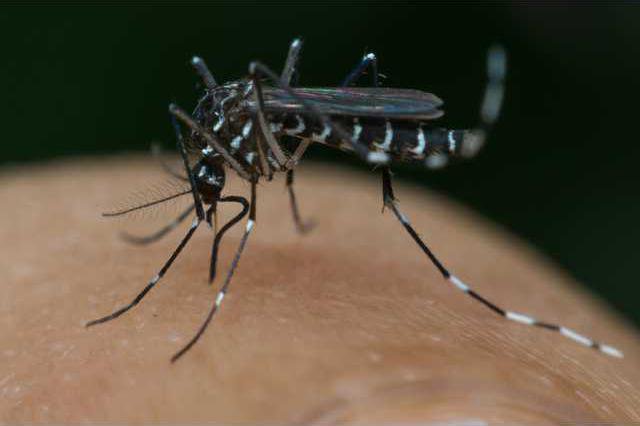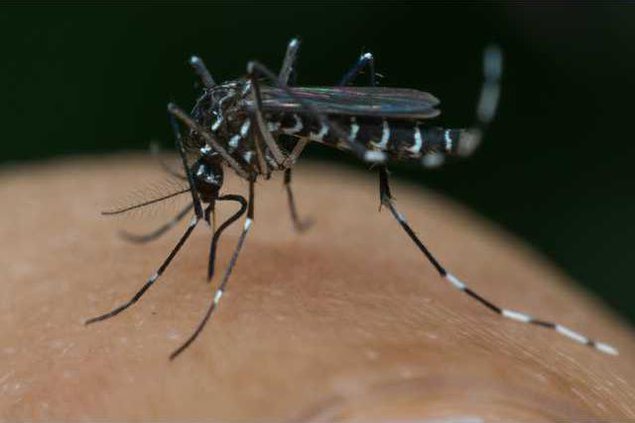The Centers for Disease Control and Prevention is monitoring nearly 300 pregnant women in the U.S. and its territories who may be infected with the Zika virus. Most cases are in Puerto Rico, but pregnant women in high-risk states should take extra precautions as mosquito season approaches, health officials say.
As of May 12, the CDC knows of 157 women on the mainland and 122 in U.S. territories who are suspected of having the virus that can cause abnormally small heads and brain abnormalities in unborn babies. More than half of the women have one or more symptoms, which include fever, joint pain and conjunctivitis.
In a news conference Friday morning, health officials did not release their identities, but said most are thought to have contracted the virus while traveling and most are still pregnant. The Washington Post reported that fewer than a dozen U.S. women experienced "adverse outcomes. The CDC offered no specifics as to what those were, but said it would give more information in future briefings.
Zika, which is transmitted through mosquito bites, blood transfusions and sexual relations, is most dangerous to a developing fetus. Up to 80 percent of adults who contract it show no symptoms, and most of the others suffer only a fever, rash and headache. In some adults, however, it can cause Guillain-Barr syndrome, an immune-system disorder that can lead to paralysis and death.
Earlier this month, Puerto Rico's first Zika-related case of microcephaly in a fetus was reported. It's unknown whether the mother had a miscarriage or an abortion, the Post said.
In the general population, there have been 544 Zika cases reported on the U.S. mainland and more than 800 in U.S. territories. So far, none of the Zika cases in the U.S. have been blamed on mosquitoes, but the CDC is warning that could change as mosquitoes multiply in warming weather.
Some people, however, should be more worried than others.
In an NPR report, University of California-Davis epidemiologist Thomas Scott divided the U.S. into three zones: high risk, low risk and extremely low risk.
Most at risk are Florida, Texas and the Gulf states, where the most common carrier of the disease, the striped-legged mosquito Aedes aegypti, is abundant.
The Southeast, Southwest and Mid-Atlantic states have less to fear, and the northern half of the country (from northern New England to the Pacific Northwest) has hardly any risk at all, NPR said. (At least from getting Zika from a mosquito. It's possible to contract it through sex if your spouse has been traveling.)
But because the outcome of a Zika infection during pregnancy is potentially devastating, women who are pregnant or trying to conceive should begin to take precautions, particularly if they live in high-risk zones.
Wear insect repellant and clothing that covers your entire body, even if you're inside, NPR said.
"These are daytime biting mosquitoes, and they're mosquitoes that like to enter people's homes," Scott Weaver of the University of Texas Medical Branch in Galveston told Michaeleen Doucleff of NPR.
NPR also advised pregnant women to keep their yards free of standing water, where mosquitoes breed, and to avoid traveling to high-risk zones over the summer.
As of May 12, the CDC knows of 157 women on the mainland and 122 in U.S. territories who are suspected of having the virus that can cause abnormally small heads and brain abnormalities in unborn babies. More than half of the women have one or more symptoms, which include fever, joint pain and conjunctivitis.
In a news conference Friday morning, health officials did not release their identities, but said most are thought to have contracted the virus while traveling and most are still pregnant. The Washington Post reported that fewer than a dozen U.S. women experienced "adverse outcomes. The CDC offered no specifics as to what those were, but said it would give more information in future briefings.
Zika, which is transmitted through mosquito bites, blood transfusions and sexual relations, is most dangerous to a developing fetus. Up to 80 percent of adults who contract it show no symptoms, and most of the others suffer only a fever, rash and headache. In some adults, however, it can cause Guillain-Barr syndrome, an immune-system disorder that can lead to paralysis and death.
Earlier this month, Puerto Rico's first Zika-related case of microcephaly in a fetus was reported. It's unknown whether the mother had a miscarriage or an abortion, the Post said.
In the general population, there have been 544 Zika cases reported on the U.S. mainland and more than 800 in U.S. territories. So far, none of the Zika cases in the U.S. have been blamed on mosquitoes, but the CDC is warning that could change as mosquitoes multiply in warming weather.
Some people, however, should be more worried than others.
In an NPR report, University of California-Davis epidemiologist Thomas Scott divided the U.S. into three zones: high risk, low risk and extremely low risk.
Most at risk are Florida, Texas and the Gulf states, where the most common carrier of the disease, the striped-legged mosquito Aedes aegypti, is abundant.
The Southeast, Southwest and Mid-Atlantic states have less to fear, and the northern half of the country (from northern New England to the Pacific Northwest) has hardly any risk at all, NPR said. (At least from getting Zika from a mosquito. It's possible to contract it through sex if your spouse has been traveling.)
But because the outcome of a Zika infection during pregnancy is potentially devastating, women who are pregnant or trying to conceive should begin to take precautions, particularly if they live in high-risk zones.
Wear insect repellant and clothing that covers your entire body, even if you're inside, NPR said.
"These are daytime biting mosquitoes, and they're mosquitoes that like to enter people's homes," Scott Weaver of the University of Texas Medical Branch in Galveston told Michaeleen Doucleff of NPR.
NPR also advised pregnant women to keep their yards free of standing water, where mosquitoes breed, and to avoid traveling to high-risk zones over the summer.








